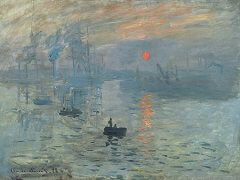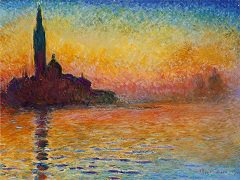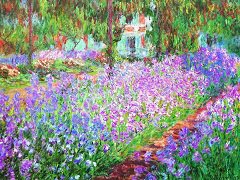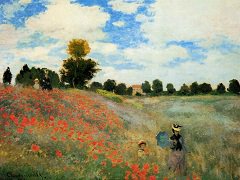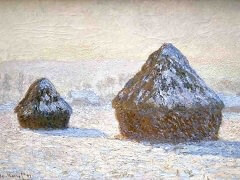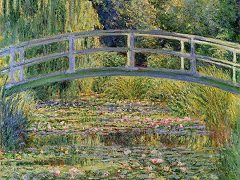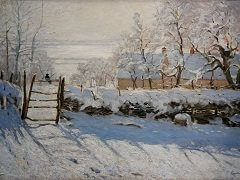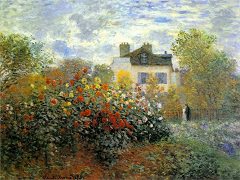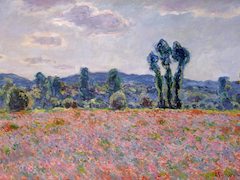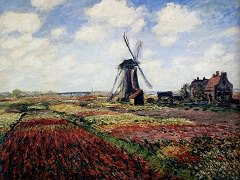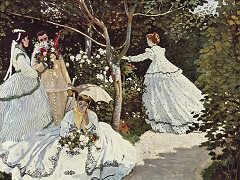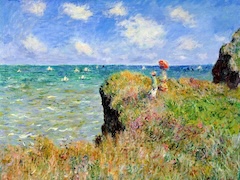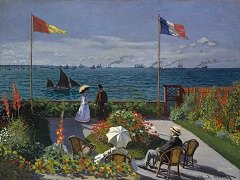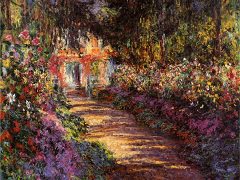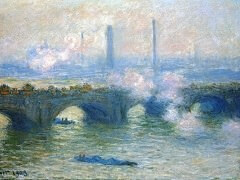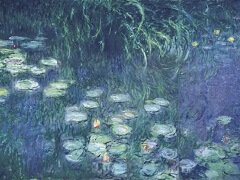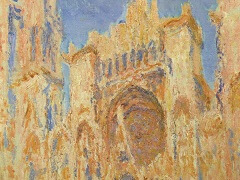Woman with a Parasol - Madame Monet and Her Son, 1875 by Claude Monet
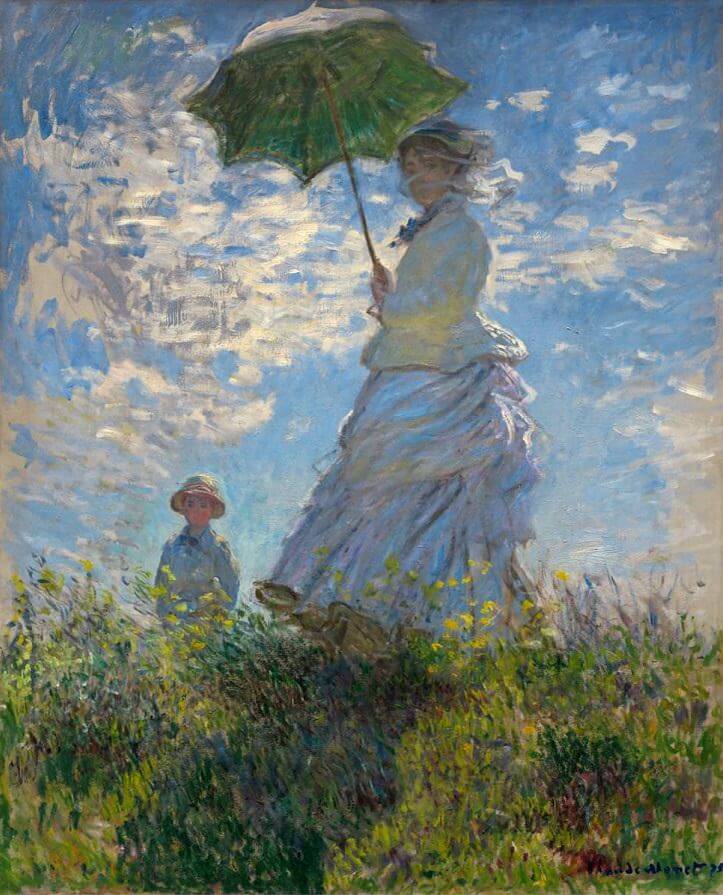
Monet stopped painting figures after the 1860s to concentrate on landscapes, Put he returned to the earlier subject in the 1880s. There are many reasons cited for this decision which seem to center around Monet wishing to use a model to pose for a beach scene with nude bathers. It is reported that Alice was less than thrilled with the idea. As a result, Monet still pursued his desire to paint figures, but chose instead to concentrate on clothed members of his large extended family.
Woman with a Parasol was painted outdoors, probably in a single session of several hours' duration. The artist intended the work to convey the feeling of a casual family outing rather than a formal portrait, and used pose and placement to suggest that his wife and son interrupted their stroll while he captured their likenesses.
In this painting of Camille and his son Jeon, Monet has adopted an unusual low viewpoint, so the artist is looking up at his subject. This has the effect of increasing Camille's import as she fills the upper parts of the canvas, giving her an almost iconic feel. Her skirts appear to whip round with the wind, adding movement to on otherwise static image the small figure of Jeon is used by Monet to balance the overall composition.

